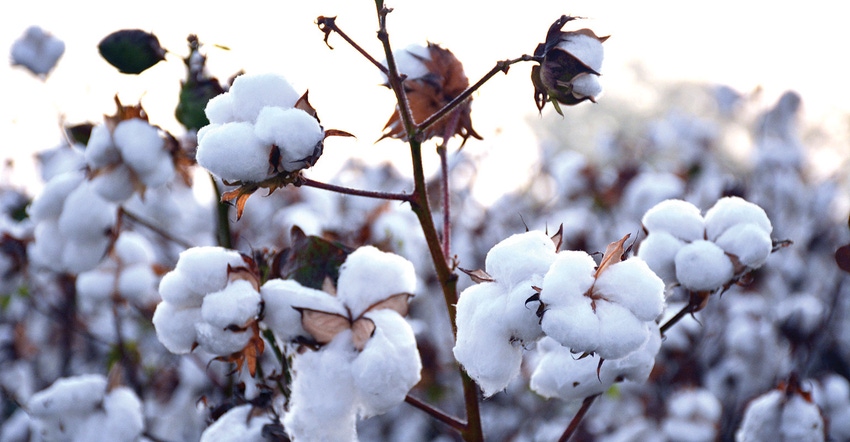
The cotton market is waiting to move higher.
O.A. Cleveland, professor emeritus, Mississippi State University, expects cotton to move into the 80s, but the market first needs to see:
What happens in India,
What the Southeast crop will make, and
How much the recent freeze affected Texas yield and quality.
Cleveland expects prices to move to 82, maybe 83 cents a pound. “I have some friends who think it will get to 85 or 86 cents,” he says. “I don’t think it will get quite that high.”
He says USDA is predicting “a little bigger U.S. cotton crop than we thought.” And the numbers from India remain to be tallied. “India is the world’s largest or second largest cotton producer,” Cleveland adds. He says USDA lags, “purposely,” on determining India’s production numbers.
The India Question
“I think the market will go higher when India’s numbers are in.” He expects those numbers to be about 1 million bales lower. “That’s a big cut, and some analysts expect even more.”
India has had production problem this season, including pink bollworms. “They had them last year and didn’t know what they were at first,” Cleveland says. “They have them again this year.”
The market has been a bit erratic of late. “It went up 200 points last Friday (Oct. 19), and today (Oct. 23) it’s down.”
He says movements in the stock market have some effect. “Friday, the market hinted that it wanted to go higher.”
He says the U.S. cotton market has lost quality. “We had a good quality crop coming along,” he says, “3 to 4 million bales of middling, strong fiber cotton.”
An early freeze in the Texas High Plains, Cleveland says, may not affect yield much but it will hurt quality.
The world’s mills are looking for quality. “Korea is the first buyer in,” Cleveland says. “They are buying middling and 36 and 37.
“The world is trying to figure out what kind of cotton quality we have. The Texas cotton is wet; the Southeast crop is wet, and we have a lot of the crop that is out but still waiting in modules to be picked up. I have never seen so much cotton waiting in the fields in the Mid-South.”
He says a lack of gin capacity also creates backlogs.
Tariff Effect
The retaliatory tariffs have kept a lid on cotton prices, too, Cleveland says. “Tariffs cut off sales to China in the short run. Mills had been more aggressive buying but have backed off with the tariffs in place.
“I think we will be well-served by the tariff in the long run,” he adds, but for now it’s a drag on the market.
He says merchants will be looking to see how they can find quality cotton to send to mills.
Cleveland says USDA production figures indicate a 19.6 million bale U.S. cotton crop. But that figure likely moves down as hurricane losses in the Southeast become clearer. Georgia crop loss to Hurricane Michael looks to bring the figure to 19.2 milion or 19.3 million bales. “If we lose production in Texas, it could be 19 million,” Cleveland says.
“I think we will get back into the 80-cent range,” Cleveland says. “I’d like to see it go higher than 85 or 86, but I think 82 and 83 are more likely.”
The market waits.
About the Author(s)
You May Also Like






